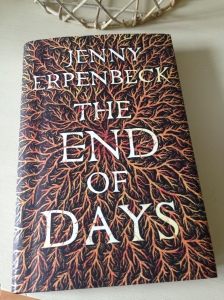Born in Galicia in 1851, Emilia Pardo Bazán was a leading exponent of Spanish Naturalism and a key figure in 19th-century Spanish literature per se. Her 1886 novel, The House of Ulloa is generally considered to be her masterpiece. My old Penguin Classics copy had been sitting on the shelves for a couple of years, but Grant’s enthusiastic reaction to the book on Twitter (following its recent inclusion in the Pocket Penguins range) prompted me to dust it off for Spanish Lit Month (now extended to August). I’m so glad I did. It’s a marvellous novel, a feisty tale of contrasting values as a virtuous Christian chaplain finds himself embroiled in the exploits of a rough and ready marquis and those of his equally lively companions.
The chaplain in question is Julián, a gentle, innocent and rather sensitive young man who is sent to the House of Ulloa in the Galician countryside in the hope that he will be able to act as a positive influence on the marquis of the manor, a libertine by the name Don Pedro. From the opening pages of the novel, one can detect a palpable sense of foreboding: Julián’s journey to the House hints at trouble ahead; the manor itself is an old ruin; and as for the marquis and the company he keeps, the chaplain appears to have his work cut out. Here are Julián’s impressions at the end of his first evening, a night featuring a bawdy supper where a young toddler is virtually forced into drinking copious quantities of wine by the various men of the house.
All the events of the day began to swim around in his mind. The nag that had almost thrown him flat on his face; the black crucifix that had sent a shiver down his spine; but above all the hubbub over supper and the drunken child. His first impressions of the people here were that Sabel was provocative, Primitivo insolent, the abbot a heavy drinker, over-fond of his hunting, and the dogs far too spilt. As for the marquis, Julian remembered what Señor de la Lage had said:
‘You’ll find my nephew rather rough around the edges. When you’re brought up in the country and never leave it, you can’t help being dull and churlish.’ (pgs. 16 -17)
As the previous overseer of the marquis’ business papers, the abbot has left everything in an unholy mess. With this in mind, Julián’s first task is to try to introduce some much-needed order into the affairs of the manor, a task that is easier said than done, especially when he comes up against Primitivo, the commanding majordomo of the marquis’ estate. While the marquis may be lord of the manor in terms of his title and position in the family, it is Primitivo who holds all the power over the local traders and tenants.
Every improvement Julián wanted to introduce, Primitivo would shrug his shoulders at and deem impossible. Every superfluous thing Julián tried to do away with, the hunter would declare indispensable for the smooth running of the estate. Innumerable small difficulties would rise up at the approach of the earnest Julián, preventing him from making any useful change. And the most alarming thing was to observe Primitivo’s disguised but nevertheless real omnipotence. Servants, tenants, labourers, even the cattle in the sheds, seemed to be under his thumb and well-disposed towards him. The flattering respect with which they addressed the master, and the half scornful, half indifferent way in which they greeted the chaplain, turned into utter submission when it came to Primitivo. Submission that was not expressed so much in words, but in the instant observance of Primitivo’s every wish, often expressed simply by a fixed cold stare of his small, lashless eyes. (pgs. 34-35)
Primitivo is a marvellous character, a rather sly fox who has been stealthily abusing his position within the marquis’ inner circle to line his own pockets, bleeding his employer dry in the process. On the other hand, the empty-headed marquis is under Primitivo’s thumb, totally dependent on his gamekeeper’s knowledge and influence to manage everything. And besides, there’s Primitivo’s daughter, a shapely servant girl named Sabel, who also happens to be the mother of the marquis’ illegitimate son, Perucho. (Young Perucho is the aforementioned wine-drinking toddler.) The marquis knows that any attempts to replace Primitivo will almost certainly come to a sticky end.
Horrified by the marquis’ fast and loose lifestyle, Julián finds himself in a quandary once he learns of the master’s liaison with Sabel and the details of Perucho’s parentage. As a man of the cloth, he cannot be seen to condone the marquis’ unholy actions by remaining at the manor. Then again, if he leaves, who knows what manner of bedevilment may ensue at the House of Ulloa, a place so desperately in need of an upstanding influence it hurts. As a potential solution to his dilemma, Julián convinces the master to move to the local town for a while, and a visit to the marquis’ uncle is arranged.
While staying with his uncle, the marquis is persuaded of the benefits of taking a virtuous wife, so he marries his young cousin, the kind and tender-hearted Nucha. Naturally Julián is delighted – at long last the marquis seems to be on a path to a brighter future. That said, the chaplain’s next challenge is to find a way of getting Sabel and the marquis’ illegitimate child away from the House of Ulloa, another task that proves much easier said than done.
When the marquis returns to the manor with his new bride, all is sweetness and light for a while, especially once the couple discover they are expecting a baby. A new, softer, more attentive side to the marquis emerges as he tends to the needs of his wife.
It seemed as though the marquis was slowly coming out of his rough shell, and his heart, so indomitable and selfish, was changing, letting the tender feelings proper to a husband and father show through, like little weeds peeping out of the cracks in a wall. If this was not exactly the Christian matrimony envisaged by the excellent chaplain, then it was certainly very close to it. (pg 131)
This doesn’t last for long though, especially once the baby arrives. Julián soon becomes Nucha’s closest ally in the house, acting as her confidante and protector whenever it is acceptable to do so. Moreover, he lives in constant fear of Nucha’s discovery of the true identity of Sabel’s son. The marquis’ wife has taken quite a fancy to the boy, allowing him to play with her own baby as the two children get along so well. Before long, Julián’s faith coupled with the particular nature of his character cause him to face another theological dilemma. I could say a little more about this, but will leave it there to avoid revealing too much about the plot.
The House of Ulloa is a terrific book, a hugely enjoyable story packed with marvellous characters and an abundance of juicy developments to sustain the reader’s interest throughout. Several scenes are rich in humour, but the novel’s darker undercurrent is never too far away – the gothic atmosphere of the Ulloa mansion is beautifully evoked. There are hunting expeditions, some rather boisterous banquets and plenty of quieter moments too. Some of the novel’s most touching scenes feature the rather sheltered Julián as he tries his best to take care of Nucha and the youngsters in the household.
Set as it is against the backdrop of Spain’s Glorious Revolution, the novel also touches on the local politics of the day, a diversion which offers Pardo Bazán plenty of scope to explore the various underhand machinations of the district’s leading movers and shakers. After all, as she notes at one point, ‘politics is a cloak for self-interest, hypocrisy and lack of principle.’ In this next passage, she describes what happens when the marquis is persuaded by Primitivo to stand for election.
Ballot-papers were tampered with, and voting times were altered without notification. Forgery, intimidation and violence are not unusual during an election, but in this one they were combined with certain strokes of ingenuity that were entirely unprecedented. In one of the polling-stations, the cloaks of those voting for the marquis were secretly splashed with turpentine and set on fire with a match, so that the unfortunate men ran out shouting, never to return. (pg 216)
All in all, this book would make an excellent choice for the current Women in Translation Month, especially for readers interested in the classics. Alternatively, anyone looking for a damn good read should check it out. Highly recommended.
You can read Grant’s review here. Tom has also written about this novel here and here.










